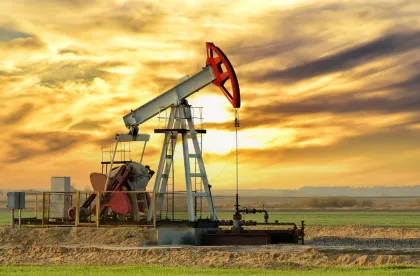Global Private Equity - Spotlight on the Industry
With traditional financers heavily influenced by public opinion and political influence, restrictions on their lending to the hydrocarbon industry are likely to remain. So where will the funding for much-needed investment in this sector come from?
As the climate change temperature rises post-COP 26 and calls to de-fund the hydrocarbon industry become more strident, it seems many financial institutions have been paying attention, and reports indicate that, in recent years, funding of the upstream oil and gas industry has fallen by US$ several hundred billion a year. Many commercial lenders, export credit agencies (ECAs), and multi-lateral agencies (MLAs) have stated that they will no longer fund oil projects, having previously announced a cessation on coal funding.
Rystad recently reported that oil demand is now past 99 million barrels of oil per day (bopd), which is higher than pre-Covid demand and is likely to exceed 100 million bopd in 2022 as economies recover from Covid restrictions. Likewise, gas and liquified natural gas (LNG) demand has risen sharply to 360 million tonnes per annum (MTPA). Both Rys tad and Woodmac have done extensive modeling on the effect on oil demand under likely energy transition scenarios, and both conclude that even with massive growth in renewables and take-up of electric cars, oil demand will remain above 70 million bopd and LNG demand will rise to 725 MTPA by 2040. Rystad also concluded that at least 1,000 new oil fields, of an average of 150 million barrels of recoverable reserves, need to be discovered and developed in the next 10 years to meet oil demand forecasts under even an aggressive de-carbonization transition scenario.
But, as we are experiencing now, this reduction in funding, coupled with rising oil and gas demand has consequences: investment in production has fallen dramatically and many new fields are waiting for funding to get developed. As a result, supply is struggling to match demand and there has been a dramatic rise in both oil and gas and LNG prices, with Brent oil climbing to recent highs of US$85 per barrel (bbl), LNG and gas trading at historic highs of Japan Korea Marker at over US$40 per metric million British thermal unit (MMBtu), title transfer facility at over US$31.6 per MMBtu for January delivery, and even Henry Hub rising to US$4.52 /MMBtu, approximately twice the price of December 2020.
Without additional upstream funding and investment, these prices are very likely to be exceeded, bringing with them the corresponding global economic shocks that high oil prices always cause and the resulting energy poverty for those most vulnerable in developed and emerging economies.
One potential new source of funding will be private equity (PE) and infrastructure funds, family office/ private wealth (PW) funds, and perhaps some sovereign wealth funds. Many of these funds are interested in the energy sector but see the renewables market as too hot, with its returns often falling to the low single digits, so their focus may return to the much better returning upstream industry.
Oil companies looking to monetise hydrocarbon investments, should therefore consider the typical investment requirements of PE/PW and the issues that have been previously constraining investment in the sector.
TYPICAL INVESTMENT TARGET REQUIREMENTS
First and foremost, PE and PW value a strong management team that has a track record of success at prior oil companies.
Specialist Skills
While oil price rises can give spectacular returns, this is not the primary investment model. PE/PW are looking for a team that can bring a skill set which will generate strong returns even if oil prices don’t rise. For example, business models that have recently attracted PE investment include expertise in late life field management that maximises recovery, reduces opex, extends field life, and consequently delays abandonment liability and expertise in a particular regional geology that provides greater exploration success for infrastructure-led exploration.
On, or Near Term, Production
PE/PW typically favour assets with a clear future production profile, although increasingly the value in near term development assets is being recognised, particularly as part of a portfolio. However, few PE houses have either the ability to value, or the inclination to invest in, extensive exploration, so a highly weighted exploration opportunity is unlikely to be attractive.
A targeted net zero approach can help attract funding.
Deal Size
This very much depends on which PE/PW fund is looking to invest. The larger PE houses are often looking for fewer but larger investments in portfolios with at least 75,000 barrels of oil equivalent per day production; China Investment Corporation, Carlyle, and CVC Capital Partners’ investment in Neptune, and EIG’s investment in Chrysaor are good examples. PW funds and some of the smaller PE funds will often look at single assets with production in the low thousand barrels.
Carbon Neutral Plan
Increasingly, PE/PW are looking for investments that have a plan to manage future emissions. PE funds in particular are under pressure from many of their investors to become greener and play an active part in energy transition, so a targeted net zero approach can help attract funding.
Potential Returns
Last but by no means least! PE/PW investors still have high hurdle rates. They will need a clear understanding of how base returns can be met and need to see the potential for greater upside as part of any investment proposal.
PREVIOUS ISSUES
When trying to present an appealing investment opportunity, oil companies should bear in mind the issues that PE and PW have faced in the past.
Getting Burnt on Prior Investments
A good example of this is US shale. While shale has been incredibly successful from the production standpoint, not every investor has seen great returns. The 2014 and 2018 oil price crashes, which led to a number of chapter 11 bankruptcies in the shale sector, caused significant losses for many US PE groups and, although there is still interest in the sector in the United States, investors are now more cautious.
Exit Options
In the past it was relatively simple to build a private oil company and then conduct a private sale or initial public offering (IPO) to enable the PE fund to exit the investment. There is concern now, however, that as the upstream sector becomes less popular with investors, it will become increasingly difficult to exit an investment, at least via an IPO.
Costly Capex Requirements to Meet New Net Zero Targets
Net Zero Targets While many integrated oil companies (IOCs) are disposing of hydrocarbon assets that are attractive from a returns perspective as a result of the drive to be net zero, IOCs are often disposing of many of their older, higher carbon cost assets that would incur costly retrofits to meet their new net zero targets (see International News, Issue 2, 2021). Although these assets meet some of the needs of PE/PW investors as outlined above, they fall foul of the requirement for carbon neutrality, which is likely to reduce their value.
Private equity and private wealth value a strong management team.
Special Purpose Acquisition Companies
Another potential source of funding for upstream assets may be through special purpose acquisition companies (SPACs), which also could help provide exit options for existing and future PE/PW investors.
SPACS have risen in number in the United States and overseas, and the new UK SPAC regulations bring its SPAC regime largely in line with the US, meaning there is relatively little legal or regulatory arbitrage in this space between the two markets. London’s longstanding role as a hub for cross border oil and gas investment and fundraising also means that sponsors may find valuations for upstream assets in this market to be closer to their expectations, provided investability concerns in the sector overall can be addressed.







 />i
/>i
